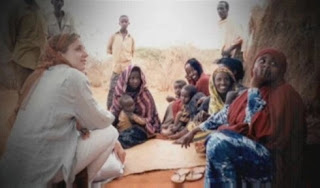With Canada Day looming, I’ve been revisiting
my book 50 Canadians Who Changed the World. A cursory inspection reminds me that these outstanding
individuals have a lot to teach the rest of us.
1. Don’t be afraid to
wade in a swamp. Because, as a boy, he felt like an outsider, David Suzuki took refuge in nature: “My main solace
was a large swamp a ten-minute bike ride from our house.” The youth was
fascinated by plant and animal life, especially insects. “Anyone who spotted me
in that swamp would have had confirmation of my absolute nerdiness as I waded in fully
clothed, my eyes at water level, peering beneath the surface, a net and jar in
my hands behind my back.” Suzuki would build on those early experiments to earn
a doctorate, become a science broadcaster, and awaken the world to climate
change.
2. If you really like a
movie, go see it ten times. As a fifteen-year-old, James Cameron was knocked out by the movie 2001: A Space Odyssey. At the local theatre in Niagara
Falls, Ontario, he went to see it ten times. He decided that, instead of a
comic book artist, he wanted to be a filmmaker. He borrowed his father’s
Super-8 camera, started shooting film, and didn’t stop. In Hollywood, he helped
lead the shift into the digital world. And in 2009, when he released the 3-D
movie Avatar, he made
digital technology the bedrock of the modern cinema experience.
3. Sometimes you have to lie to your
mother. Just before she flew
into Somalia, which was a war zone, Samantha
Nutt left a series of
post-dated postcards to be sent to her mother from Kenya. Having a wonderful time on safari.
Seeing tons of lions, zebras, giraffes, and elephants. Wish you were here. At age twenty-five, she was
researching an advanced medical degree on women’s health in failed states. What
she discovered shocked her, and galvanized her into co-founding War Child Canada. By delivering aid to
war-torn nations, this charitable, humanitarian organization changed the world.
4. Do not dismiss your premonitions. On December 30, 1981, while driving to the arena with a
team mate, twenty-year-old hockey player Wayne
Gretzky turned to his fellow Edmonton Oiler and said, “Geez, I
feel weird. I might get a couple tonight.” Gretzky was chasing a record set in 1945 by Maurice “The Rocket” Richard: fifty goals
in fifty games. With thirty-eight games behind him, Gretzky had scored
forty-five. But on this night, he wrote later, “it was almost eerie the
way things happened.” He registered four goals, “but then the magic suddenly
left me.” He missed three point-blank chances. As the game wound down, he
mounted one final rush. With seven seconds remaining, he took a cross-rink pass
and then fired the puck “into the world’s most beautiful net.” Having scored
fifty goals in thirty-nine games -- a record that has yet to be broken -- Wayne
Gretzky went on to bring hockey into the mainstream of North American sport.
5. When all else fails, go lie on a beach. When he was twenty-four, Guy Laliberte went to Hawaii for a holiday. He had
been performing with a street festival in small-town Quebec, specializing in
juggling, stilt-walking, and fire-eating. The year was 1983, and the provincial
government had announced that it was funding projects to celebrate the 450th
anniversary of the arrival of French explorer Jacques Cartier. While lying on a
beach in Hawaii, watching the sun go down, Laliberte conceived of mounting a Cirque du Soleil (Circus of the Sun).
That vision, inspired by a Hawaiian sunset, would enable Laliberte to transform
our conception of the circus and give rise to a global empire that today
employs thousands of people from more than 40 countries.








No comments:
Post a Comment